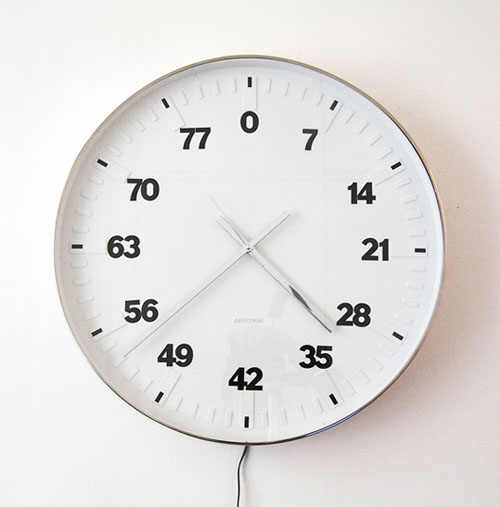
The Life clock, by Bertrand Planes runs on a “clock mechanism slowed down 61320 times” so that each number represents years. – Link
Marco writes in asking – “How does one make one of these?”
Well, besides having highly reliable components – I’d imagine the clock hands could be animated by stepper motors which in turn are driven by a microcontroller/realtime clock . . . hmm, any readers care to step in here?
This might come in handy, for starters:
Relatime clock module with calendar accurate up to year 2100 – Link
Related:
Clock of the long now from Bay Area Maker Faire ’07 – Link
From the Maker store:
LED Clock kit – Link
16 thoughts on “Life clock”
Comments are closed.
ADVERTISEMENT
Join Make: Community Today











He’s not a Spinal Tap kinda guy, is he. My clock would go to 110, at least!
Stepper motors would probably be the best way to go about this. I’m assuming the minute hand represents how far through the year it is and the hour hand represents the year. So, each tick would be a little less than a week. I would use a little AVR to control the stepper motors and a real-time clock to keep track of the time. The battery that comes with the RTC above should be enough to keep the clock running during a power outage. Sounds like a fun project!
P.S.
Here’s a good instructable on how to control stepper motors from an AVR:
http://www.instructables.com/id/Drive-a-Stepper-Motor-with-an-AVR-Microprocessor/
Clocks like this are driven by a type of stepper motor that steps every time the clock ticks. You’ll see it better on a clock with a seconds hand, but the principle is to divide down a quartz crystal to 1Hz and then drive the motor with that. If you replace the original driver (usually a chip-on-board “blob”) with a microcontroller, you can have the clock go as slow as you like, and probably quite a bit faster than real-time.
My concern would be accidental jostling or a small mechanical problem that possibly prevents the hands from moving every couple months…that would be hard to detect, but would add up. Some type of feedback mechanism could help. Also, it would require a lot of thought to build something that would actually last that many years. As an example of the problems faced, microcontroller Flash memory is typically rated to retain programming for only 20 years. Crystal oscillators also degrade with age. The best solution I can imagine would be a very robust dry-lubed mechanical device with a simple 1PPS interface, so that you can always rebuild a controller that can get the current atomic clock time and activate the clock, regardless of the technology available.
This clock is completely depressing. When I think about where the hands would be on MY clock, I can’t help but shudder.
That was my first thought too Ken. This is a depressing project.
Didn’t I see this on SkyMaul before?